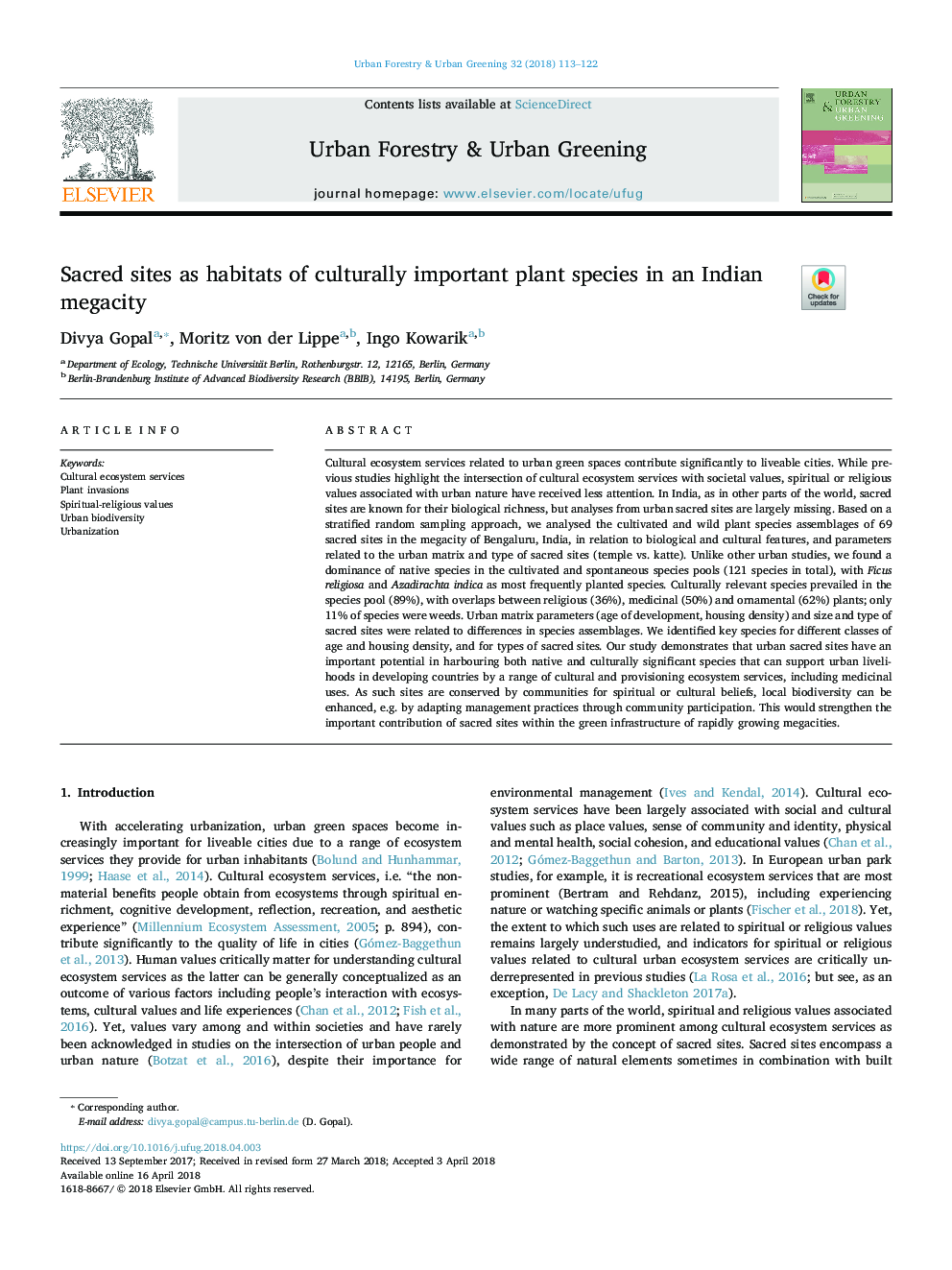| کد مقاله | کد نشریه | سال انتشار | مقاله انگلیسی | نسخه تمام متن |
|---|---|---|---|---|
| 6549209 | 1421858 | 2018 | 10 صفحه PDF | دانلود رایگان |
عنوان انگلیسی مقاله ISI
Sacred sites as habitats of culturally important plant species in an Indian megacity
دانلود مقاله + سفارش ترجمه
دانلود مقاله ISI انگلیسی
رایگان برای ایرانیان
کلمات کلیدی
موضوعات مرتبط
علوم زیستی و بیوفناوری
علوم کشاورزی و بیولوژیک
جنگلداری
پیش نمایش صفحه اول مقاله

چکیده انگلیسی
Cultural ecosystem services related to urban green spaces contribute significantly to liveable cities. While previous studies highlight the intersection of cultural ecosystem services with societal values, spiritual or religious values associated with urban nature have received less attention. In India, as in other parts of the world, sacred sites are known for their biological richness, but analyses from urban sacred sites are largely missing. Based on a stratified random sampling approach, we analysed the cultivated and wild plant species assemblages of 69 sacred sites in the megacity of Bengaluru, India, in relation to biological and cultural features, and parameters related to the urban matrix and type of sacred sites (temple vs. katte). Unlike other urban studies, we found a dominance of native species in the cultivated and spontaneous species pools (121 species in total), with Ficus religiosa and Azadirachta indica as most frequently planted species. Culturally relevant species prevailed in the species pool (89%), with overlaps between religious (36%), medicinal (50%) and ornamental (62%) plants; only 11% of species were weeds. Urban matrix parameters (age of development, housing density) and size and type of sacred sites were related to differences in species assemblages. We identified key species for different classes of age and housing density, and for types of sacred sites. Our study demonstrates that urban sacred sites have an important potential in harbouring both native and culturally significant species that can support urban livelihoods in developing countries by a range of cultural and provisioning ecosystem services, including medicinal uses. As such sites are conserved by communities for spiritual or cultural beliefs, local biodiversity can be enhanced, e.g. by adapting management practices through community participation. This would strengthen the important contribution of sacred sites within the green infrastructure of rapidly growing megacities.
ناشر
Database: Elsevier - ScienceDirect (ساینس دایرکت)
Journal: Urban Forestry & Urban Greening - Volume 32, May 2018, Pages 113-122
Journal: Urban Forestry & Urban Greening - Volume 32, May 2018, Pages 113-122
نویسندگان
Divya Gopal, Moritz von der Lippe, Ingo Kowarik,